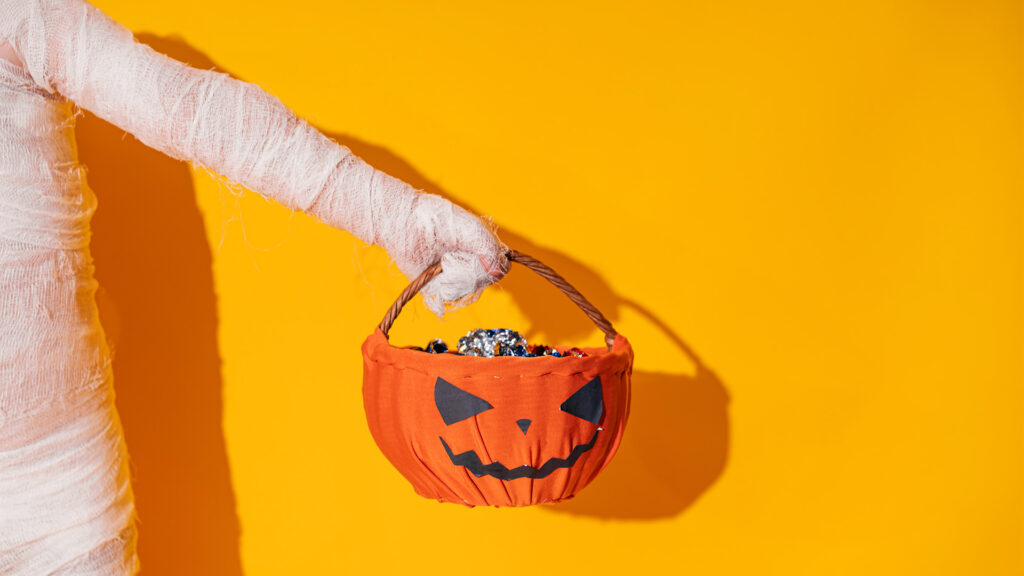
Tips for an Inclusive Halloween
Halloween is an opportunity for every child to experience the joy of dressing up and trick-or-treating, regardless of their unique needs. For children with disabilities, however, traditional Halloween activities can sometimes be overwhelming or challenging. Community members play a crucial role in ensuring that every child can safely and happily participate in the festivities.
This blog is designed to offer guidance for community members who want to make Halloween more inclusive. With a little planning and awareness, you can create a welcoming environment for all trick-or-treaters, ensuring that every child, no matter their abilities, can enjoy the magic of Halloween.
Before diving into specific ways to help, it’s important to understand the diverse range of challenges that children with disabilities may face. These challenges could include sensory sensitivities, communication differences, physical disabilities, or developmental delays. By being aware of these potential difficulties, you can create a more inclusive and enjoyable trick-or-treat experience.
Sensory Sensitivities
Some children are sensitive to bright lights, loud noises, or certain textures, which can make Halloween decorations or costumes overwhelming for them.
Tip: Consider keeping the volume low if you’re playing spooky music or using sound effects. Avoid decorations with strobe lights or startling elements like sudden movements or loud noises, as these can be unsettling for kids with sensory sensitivities.
Communication Differences
Not all children will be able to say “trick or treat” or “thank you” in the traditional way. Some children may use alternative forms of communication, like non-verbal gestures, devices, or sign language.
Tip: Be patient and understanding if a child doesn’t verbally say “trick or treat.” A smile, a wave, or a simple gesture might be their way of communicating. You can also greet them with “Happy Halloween!” and allow them to respond in whatever way is comfortable for them.
Tip: You might encounter children carrying a card or sign that explains their communication style. Read it with an open heart and be supportive.
Mobility Challenges
Children with physical disabilities may find it difficult to navigate steps, uneven paths, or crowded areas. Trick-or-treating can be especially challenging for those using wheelchairs, walkers, or other mobility aids.
Tip: Make sure your home is easily accessible by clearing paths of any obstacles like decorations, pumpkins, or lawn furniture. If you have steps leading to your door, consider setting up a candy station at the bottom of the steps or on a flat surface to make it easier for children with mobility issues to participate.
Tip: If you see a child in a wheelchair or with other mobility challenges, don’t hesitate to bring the candy to them if they’re unable to approach your door.
As a community member, you have the ability to make Halloween more inclusive with small but meaningful actions. These adjustments can ensure that all children feel welcomed and included in the fun.
Offer Non-Candy Treats
For some children, food allergies, dietary restrictions, or sensory sensitivities make traditional candy a less-than-ideal option. By offering non-candy treats, you can ensure that every child who visits your home leaves with something they can enjoy.
Tip: Participate in the Teal Pumpkin Project, which promotes offering non-food treats to children with food allergies. Place a teal-colored pumpkin outside your home to signal to families that you provide items like stickers, small toys, or glow sticks.
Tip: You don’t have to replace candy entirely—just add a small bin of non-food items that children can choose from if needed. This small gesture can make a huge difference for many families.
Be Patient and Understanding
Some children with disabilities may take a little longer to approach your door, or they may behave in ways that are unfamiliar. It’s important to be patient and understanding, recognizing that every child is unique and may experience Halloween in different ways.
Tip: If a child seems hesitant or takes longer than usual to say “trick or treat,” offer a warm smile and give them the time they need. Halloween should be a fun and stress-free experience for everyone.
Tip: Be flexible and kind. Not every child will be able to respond in the way you expect, but a welcoming and open attitude ensures that they feel included and appreciated.
Halloween is a time for fun, excitement, and making memories. By taking a few simple steps, you can help ensure that every child—regardless of their abilities—feels included and welcome in your community. At Seneca Health Services, we are committed to promoting inclusivity and supporting families of all children. Your efforts to create a more accessible Halloween can have a lasting impact on the children and families in your community.
